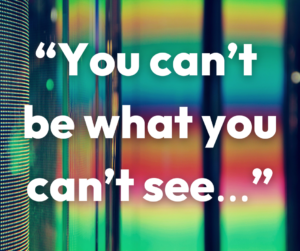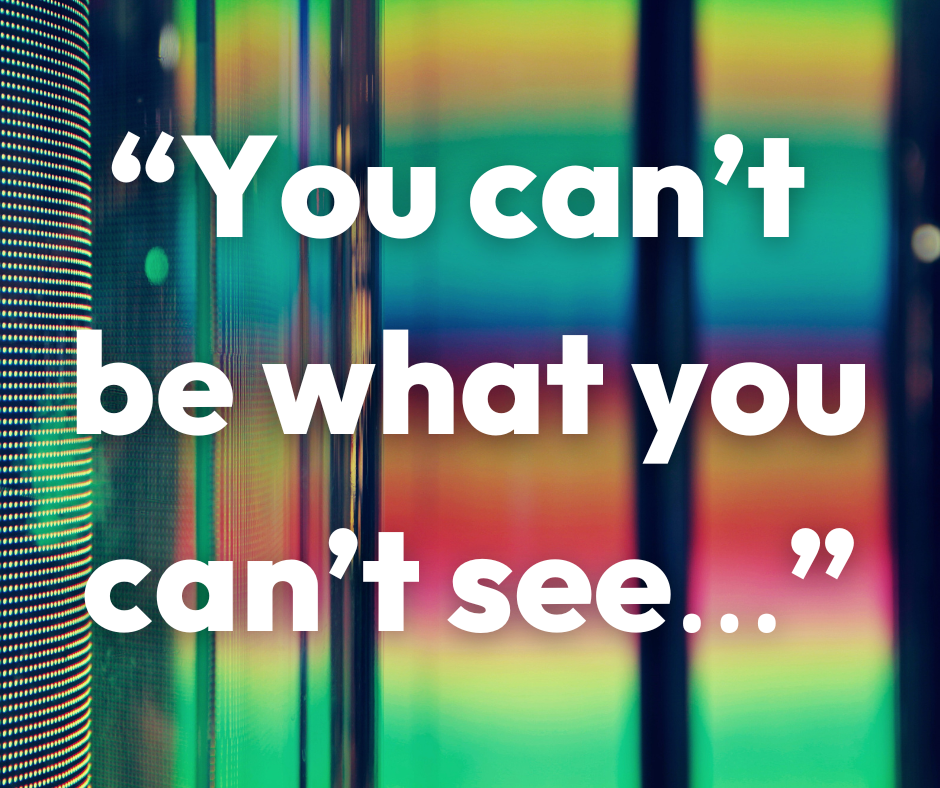This is a special quest post from Pam McGee of STEM Women, an organisation that provides careers events and promotes jobs aimed at university students and recent graduates who identify as women or non-binary, and study a STEM related subject.
“You can’t be what you can’t see…” 
This quote is often used to highlight the importance of role models in helping to inspire us to achieve our ambitions. At STEM Women, we recognise that to achieve greater diversity in STEM industries (Science, Technology, Engineering and Mathematics) – fields which have traditionally been perceived as heterosexual and male-dominated – we need to shine a light on the career journeys and achievements of those who are currently underrepresented in these sectors.
The LGBTQ+ community has made significant contributions to STEM disciplines, and it’s crucial to challenge stereotypes and celebrate achievements which, in many cases, have fundamentally changed the way we see the universe.
“The LGBTQ+ community has made significant contributions to STEM disciplines, and it’s crucial to challenge stereotypes and celebrate achievements which, in many cases, have fundamentally changed the way we see the universe.”
Recognition of the historical achievements of prominent LGBTQ+ figures has increased in recent years – for example, the inclusion of renowned mathematician and cryptanalyst Alan Turing on Bank of England fifty pound note – but there is still much ground to be made up in recognising a wider field of individuals. This Pride Month let’s explore the impact of LGBTQ+ individuals in STEM, the importance of role models, and the steps many employers are making to create more inclusive STEM workplaces.
Influential LGBTQ+ Figures in STEM
Numerous LGBTQ+ individuals have made remarkable contributions to the field of STEM. Recognising their achievements helps inspire future generations and highlights the value of diversity.
Here are just a few notable figures:
- Nergis Mavalvala: An astrophysicist whose ground-breaking work helped confirm part of Einstein’s theory of relativity. Mavalvala identifies as a lesbianand speaks about her sexual orientation and family history as a Pakistani immigrant, describing herself as an “out, queer person of colour”.
- Tim Cook: CEO of Apple. The first CEO of any Fortune 500 company who is openly gay.
- Lauren Esposito: Scientist and co-Founder of the 500 Queer Scientists network, created after a survey of STEM workers identified that over 40% of LGBTQ+ scientists were not ‘out’ to their colleagues.
- Polly Arnold: A chemistry professor at the University of California, whose research focuses on synthetic chemistry.
- Audrey Tang: the Digital Minister of Taiwan and the force behind Taiwan’s tech-based Covid-19 response. Tang has identified as ‘post-gender’.
By recognising LGBTQ+ STEM role models, in both the curriculum and the workplace, we can encourage and empower others.
“Numerous LGBTQ+ individuals have made remarkable contributions to the field of STEM. Recognising their achievements helps inspire future generations and highlights the value of diversity.”
Collecting Data and Creating Safe Spaces
How many LGBTQ+ people are currently working in STEM? This is a difficult question to answer, both because this data hasn’t always been collected, and because individuals may not feel safe to volunteer this information. But estimates suggest that the LGBTQ+ community is underrepresented by approximately 20%, with even lower representation at senior levels.
At STEM Women’s networking and recruitment events, we create a safe space and a sense of community amongst those who are underrepresented in STEM, and we collect information on LGBTQ+ status of attendees in order to promote awareness and work toward changing the future STEM workforce. Recent events hosted by STEM Women in Australia/New Zealand, and the UK showed that a significant number of attendees identified as LGBTQ+ (12% and 15%, respectively). We’re proud to be part of the ongoing effort to foster a greater sense of belonging for LGBTQ+ people in STEM.
Supportive Work Environments
Many STEM organisations are now taking steps to foster a more inclusive and diverse workplace for LGBTQ+ people through employee networks, use of more inclusive language, raising awareness and celebrating diverse representation through Pride Month (June), International Day of LGBTQ+ People in STEM (18 November) and other awareness days. At STEM Women’s recent events, employer representatives have spoken about their experiences as an LGBTQ+ person in STEM, making them accessible role models for students and graduates.
Every individual can be an ally and contribute to promoting inclusivity in the workplaces through:
- educating themselves about LGBTQ+ issues, experiences, and challenges to better understand and support colleagues;
- creating inclusive conversations and avoiding making assumptions about personal relationships;
- challenging stereotypes and advocating for inclusive and intersectional representation that recognises the impact of people from all backgrounds.
“I believe we need an inclusive and intersectional revolution, making sure that we don’t just include people, [but] that they belong in an organisation at every level, and they can prosper.” (Alfredo Carpineti, Founder of ‘Pride in STEM’).
Read about the Career Zone’s work Supporting Equality and Diversity.

